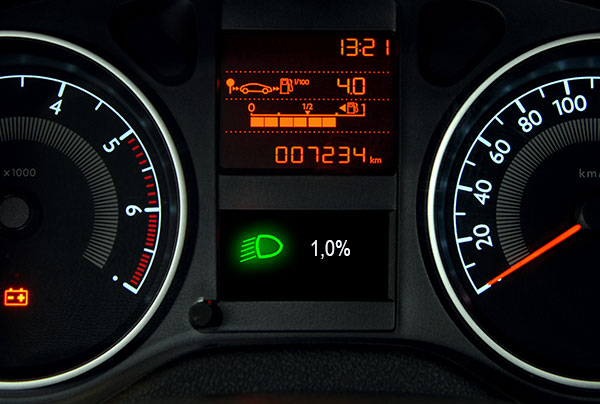For the safety of you and other road users, it’s important to have working lights on our cars. This includes side- and taillights, headlights (main and dipped beams), direction indicators, stop lights, a rear number-plate light, reversing lights, fog lights (front and rear), daytime running lights (DRL) , long-range driving lights and hazard warning lights.
But how can you tell if your car lights are working and are your headlights correctly aligned?
How to check if your car bulbs are working
It’s possible to spot a broken bulb due to a light not working when turned on or if you spot a visible break in the filament, sometimes with blackened glass. In either case, it’s a good idea to test your bulbs with a test bulb kit.
How to check if your headlights and taillights are working
The easiest way to check if your lights are working is to turn the engine on and leave the handbrake on. Then turn on each light and walk around the car to visually check them.
How to check headlight alignment
We all know how annoying – and potentially dangerous – it is to be dazzled by the glare of oncoming headlights. But how can you check that you’re not blinding other drivers with your headlights?
Checking the alignment of your headlights isn’t difficult, but you do need some specific tools: a Phillips-head screwdriver, masking tape, a spirit level, a measuring tape, level ground, a dark wall or garage door and 10m of space.
While you could check your owners’ manual for the precise distance required to check your headlight alignment (different manufacturers have different recommendations), it isn’t necessary to have a standard distance – as long as you measure correctly. In other words, the centre point of your headlights should be one cm lower for every metre your car is moved from the starting point. In other words, if the centre point of your headlights is 40cm from the ground when your car is 50cm from the wall, then the centre point should be at 35cm when your car is 5.5m from the wall. If this isn’t the case, the headlights need to be adjusted so the centre point is at 35cm.

Preparation:
Before you measure the centre point, it’s important to ensure your car is prepared correctly. This means:
- Park on level ground, 50cm from a dark wall or a garage door, with the front of the car facing the wall. Confirm your car is on level ground by using a spirit level on the side of the vehicle, for example on the doorframe or roof.
- Level your car by removing any excess weight from your boot and ensuring the tyre pressure in all tyres is at the manufacturer’s recommended PSI levels (check your owner’s manuals for this). If you have headlight aim adjustment wheel, move it to the zero position. And, if possible, ask someone to sit in the drivers’ seat, clean your windscreen and make sure that the fuel tank is half full.
- Measure the distance from the ground to the headlights to ensure the suspension is level.
- Check the inclination value on the headlight. It’s usually on the shell of the reflector. 1% means the low beam tilts 10cm for every 10m, and 1.2% means the low beam tilts 12cm for every 10m.

Alignment:
- Place your car 50cm from the dark wall or garage door, then turn your main lights on (not your high beams or fog lights).
- Mark the horizontal part of the cut-off line (the red line in the image below).

- Mark a horizontal line 10cm under the cut-off line (or 12cm if your inclination value is 1.2%).
- Move your car exactly 10m back and turn your headlights on again. Does the light from your headlights line up to the lower horizontal marked line? If not, your headlights need to be adjusted using the two alignment screws on each reflector until it lines up correctly.
Please note: the alignment screws on each reflector can change both the horizontal and vertical alignment of your headlights. If you’re not sure you’ve correctly adjusted your alignment, talk to a trained technician. - When you’re happy with the alignment of your headlights, it’s time to test it. Take your car out for a test drive, preferably along some darker roads, to check that your headlights are aligned correctly.
Keep in mind that, even if you are happy with the horizontal alignment of your headlights, next time you visit a workshop, you should ask a mechanic with lighting expertise to make sure both the horizontal and the vertical alignment of your lights is correct.
The content contained in this article is for entertainment and informational purposes only and should not be used in lieu of seeking professional advice from a certified technician or mechanic. We encourage you to consult with a certified technician or mechanic if you have specific questions or concerns relating to any of the topics covered herein. Under no circumstances will we be liable for any loss or damage caused by your reliance on any content.
